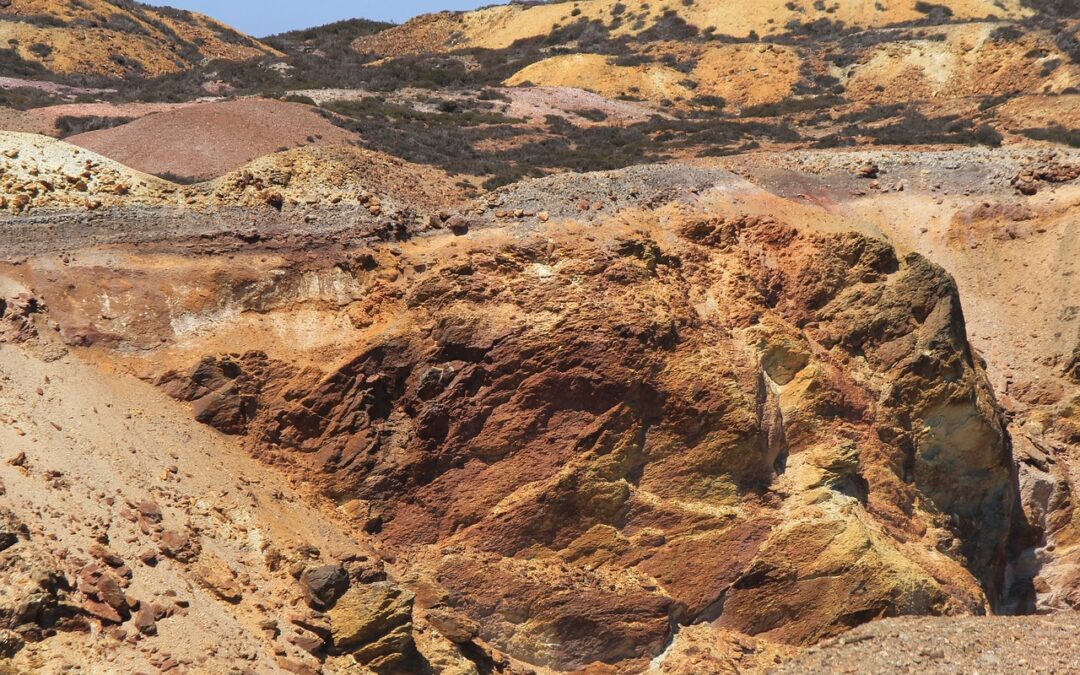Pre-Industrial Era Mining is one of humanity’s oldest professions, crucial to the growth of civilizations throughout history. Starting with simple tools in prehistoric times, it has evolved from basic techniques to the sophisticated practices of ancient cultures. Early miners focused on easily accessible materials for making tools, weapons, and jewelry. As demand for metals like gold, silver, and copper grew, mining methods became more advanced. This article delves into the origins, developments, and social impacts of pre-industrial mining, shedding light on the practices that paved the way for modern resource extraction.
The Origins of Mining: Early Methods and Tools
Mining dates back to the prehistoric era when early humans used rudimentary tools like stone hammers and chisels to extract minerals and stones. These tools, made from flint, obsidian, and other natural materials, helped early societies acquire raw materials for making weapons, tools, and ornaments. Early mining often involved simple methods like surface collection and shallow excavation, as miners sought readily accessible deposits.
The Role of Mining in Ancient Civilizations
In ancient civilizations such as Mesopotamia, Egypt, and the Indus Valley, mining became a cornerstone of economic and cultural development. Precious metals like gold and silver were highly valued for their beauty and rarity, often used in religious ceremonies and as symbols of power. Copper and tin, essential for bronze production, were extracted to create tools and weapons, fueling the growth of early societies.
The Evolution of Ancient Mining Techniques Over Time
As civilizations advanced, so did their mining techniques. Ancient Egyptians developed underground mining methods to extract malachite and turquoise, while the Romans introduced large-scale mining operations using aqueducts and hydraulic mining to uncover precious metals. This evolution of mining techniques laid the foundation for more efficient practices, even though they still relied heavily on manual labor.
Gold, Silver, and Other Precious Metals: Economic and Cultural Significance
Throughout history, gold and silver have been highly prized commodities. These metals were used to craft intricate jewelry, coins, and religious artifacts, symbolizing wealth and power. The quest for these precious metals drove exploration and trade, shaping economies and inspiring conquests in ancient times. Silver, in particular, was vital in establishing early monetary systems.
The Social and Labor Aspects of Pre-Industrial Mining
Pre-industrial mining was labor-intensive and physically demanding. Communities often worked together in mines, with tasks divided based on age, gender, and skill. While men typically handled excavation, women and children were often tasked with sorting materials. This communal approach to mining strengthened social bonds but also underscored the hardships endured by early laborers.
The Role of Slavery and Forced Labor in Early Mining Operations
Unfortunately, early mining operations often relied on slavery and forced labor. In ancient Rome, enslaved individuals worked in mines under harsh and inhumane conditions. These workers, driven by coercion, were forced to extract resources from the earth to fuel the ambitions of empires. This dark chapter of mining history highlights the human cost of early resource extraction.
Dangers and Challenges Faced by Ancient Miners
Mining in ancient times was fraught with dangers, from cave-ins and flooding to exposure to harmful minerals. The lack of advanced safety measures and equipment meant that injuries and fatalities were common. Early miners faced the constant threat of respiratory issues caused by dust inhalation, a problem that persists in some mining industries today.
Mining and Its Influence on Early Trade Routes
The demand for minerals and metals spurred the creation of early trade routes, connecting distant civilizations. Mining centers became hubs of commerce, exchanging resources like gold, salt, and copper for other goods. These trade routes facilitated cultural exchange and the spread of technology, significantly influencing the development of ancient societies.
The Rise of Mining in the Medieval and Renaissance Eras
During the medieval and Renaissance periods, Pre-Industrial Era Mining advanced significantly. Innovations such as water-powered mills and ventilation systems allowed miners to dig deeper and extract resources more efficiently. This era also saw the establishment of mining towns and the rise of guilds, which regulated the industry and protected miners’ rights.
Challenges and Innovations: Overcoming Geological Obstacles
Mining in the pre-industrial era often faced geological challenges, such as hard rock formations and water intrusion. Ancient engineers developed innovative solutions like drainage systems and wooden supports to stabilize tunnels. These advancements not only improved safety but also allowed for the extraction of previously inaccessible resources.
The Environmental Impact of Early Mining Practices
While early mining methods were less invasive than modern practices, they still had significant environmental impacts. Deforestation, soil erosion, and water contamination were common byproducts of early mining practices. These issues highlight the long-standing tension between resource extraction and environmental stewardship.

The Decline of Early Mining and the Path Toward Industrialization
As industrialization began in the 18th century, pre-industrial mining methods became obsolete. The development of machinery and advanced tools revolutionized the industry, enabling large-scale operations. This shift marked the decline of traditional practices and the dawn of a new era in mining.
The Legacy of Early Mining and Its Impact on the Modern World
The legacy of early mining is still evident today. Ancient techniques and innovations laid the groundwork for modern mining practices, while the quest for resources continues to shape economies and societies. By examining the history of mining, we can better appreciate its role in human development and strive to create a more sustainable and equitable future for the industry.

